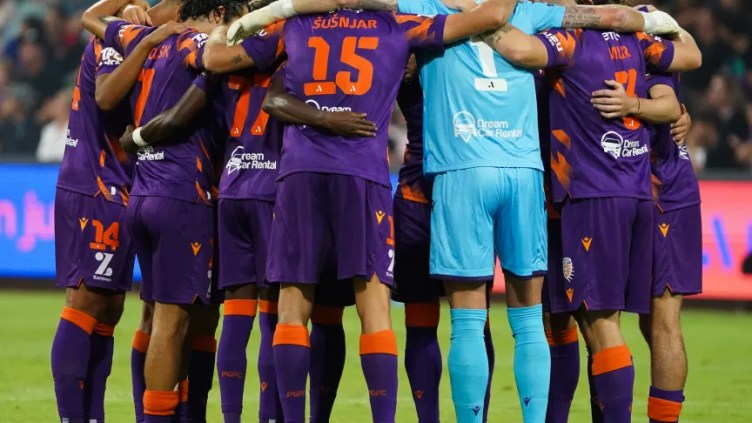Former Newcastle Jets and Sydney FC coach Branko Culina joins footballaustralia.com.au as an occasional columnist, focusing on coaching issues and tactical trends.
Former Newcastle Jets and Sydney FC coach Branko Culina joins footballaustralia.com.au as an occasional columnist, focusing on coaching issues and tactical trends.
Over the past decade, the 4-2-3-1 has emerged as the world’s most popular formation, but it doesn’t suit everyone. Here in the Hyundai A-League, plenty of teams use it, but not all of them succeed with it.
In my view, Brisbane Roar, Newcastle Jets and Perth Glory are the clubs who this season can expect to get the most out of a system that allows them to play a possession-based game with the emphasis on quick counter-attacking. Why? Because of they’ve got the players to make it work. More on that later.
At international level, Spain, Germany and The Netherlands are just some of the top countries to use the system. At club level, Real Madrid, Bayern Munich, Chelsea, Borussia Dortmund and Manchester City have all had great success with this formation in recent years.
The Qantas Socceroos have also used it for the best part of seven years – ever since Guus Hiddink arrived just prior to the 2006 World Cup. Perhaps because of Hiddink’s influence, almost all the A-League clubs play it now.
So why has the 4-2-3-1 become so popular? For me it’s because of its flexibility. You can revert to a 4-4-2, a 4-3-3 or even a 4-5-1 – depending on the flow of the game – without greatly interrupting the structure and personnel.
The system suits teams who have a genuine no.10 who can also play as second striker, although I personally believe the modern playmaker is more likely to be the no.6 because he has more time and space to influence the game.
Which brings me to my point: while most teams in the A-League play the system well and have some quality players in key positions, Brisbane, Perth and Newcastle have the best overall balance to get the maximum out of the formation.
The three key positions are no.6 (controlling midfielder/distributor), no.10 (playmaker) and no.9 (striker/goalscorer). Our competition is blessed with some outstanding no.10s in Alessandro Del Piero, Mitch Nichols, Dario Vidosic, Tom Rogic, Fred, Shinji Ono and Marcos Flores.
However, the key to this system is the right balance around the no.10, where the support of a good controlling midfielder and a strong targetman or mobile goal scoring striker make all the difference. That’s why the Roar, the Jets and the Glory have a lot to look forward to this season.
Brisbane have a ball-winner and good distributor in Erik Paartalu in controlling midfield, a clever playmaker in Mitch Nichols, a mobile striker and goalscoring freak in Besart Berisha.
The Roar also have the added bonus of having Thomas Broich who is equally comfortable in a number of key positions, while attacking fullbacks Ivan Franjic and Shane Stefanutto can – on their day – be unplayable.
Perth Glory-s central midfield of Jacob Burns and Liam Miller is also very good. Burns provides work rate and ball winning attributes while Miller-s passing ability is second to none. McGarry is a good player but not a no.10 – in my view the Glory would do better if he swapped roles with Miller. Up front in Shane Smeltz they have a strong skilful and prolific goalscorer.
Newcastle may lack a little bit of quality in key positions but to me they are the best counter attacking team using this formation in the A-League.
In the centre of midfield they have two solid controlling midfielders in Ruben Zadkovich and Jobe Wheelhouse, very quick and mobile fullbacks in Dominik Ritter and Scott Neville, while Craig Goodwin and James Virgili have the speed and dribbling ability to complement their best asset – the strength of the target man Emile Heskey and intelligence of Ryan Griffiths.
Of course it’s not only about what you do in possession, but also how well you work without the ball.
The 4-2-3-1 formation is very flexible when the opposition has the ball. Depending on the state of the game, you can set up your team to defend with one player in attack, five in midfield and four in defence or two in attack, four in midfield and four in defence.
Mobile teams like Brisbane and Newcastle have an added advantage – they can defend with lines of three strikers, three midfielders and four defenders, and can therefore regain possession high in the opposition half.
Having said the 4-2-3-1 is about the players, and different coaches use it in different ways. Tactically-smart coaches like Graham Arnold have shown they can adjust the system during the game without changing too much to the structure or the personnel.
However the bottom line is that it works best when you have quality players in key positions, which is why I believe Brisbane, Newcastle and Perth have an edge over the rest.



